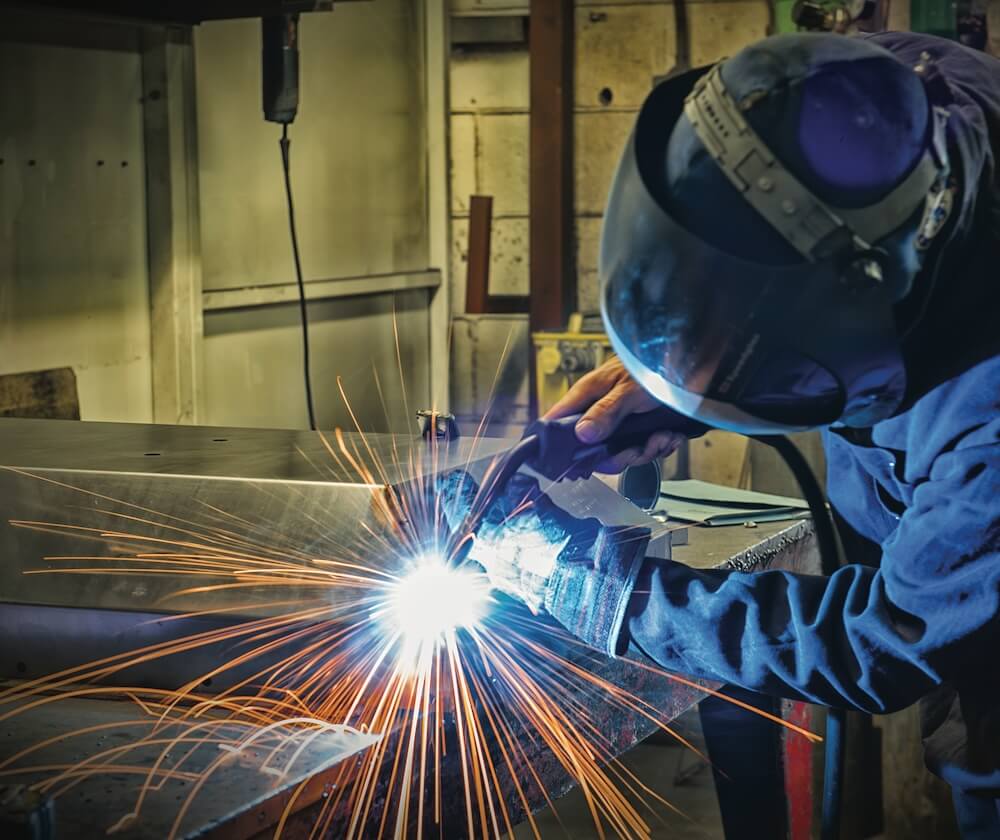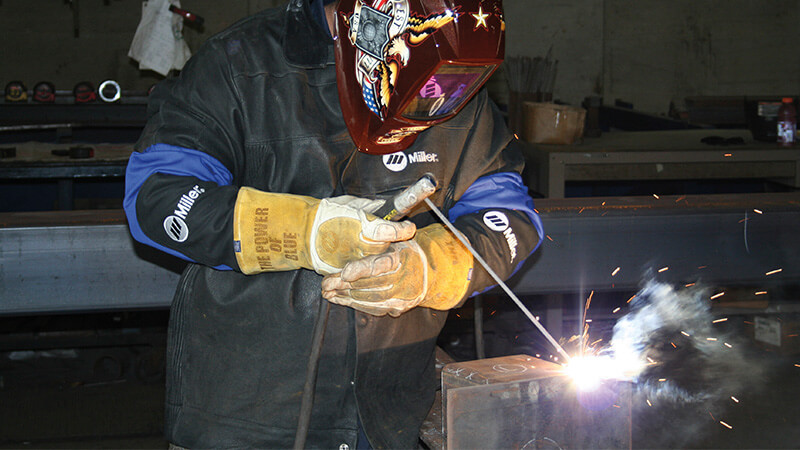Tips from Montana Mobile Welding and Repair Belgrade prevent porosity and distortion in welding
Usual Welding Repair Issues and Exactly How to Address Them Properly
Welding repair work usually come across a series of concerns that can jeopardize the stability of the last product. Common problems include inadequate infiltration, porosity, and misalignment, amongst others. Each issue offers special challenges that call for specific techniques for resolution. Comprehending these issues is important for welders intending to enhance their results and abilities. This conversation will discover these common welding repair service issues and reliable techniques to resolve them.
Insufficient Penetration
Insufficient penetration happens when the weld steel stops working to completely fuse with the base material, leading to weak joints and prospective structural failures. This concern often comes from inadequate warmth input, incorrect electrode angle, or inappropriate welding speed. Welders may experience poor penetration because of a mistake of the essential criteria for a details product density or kind. In addition, contamination on the base product's surface can impede efficient bonding, aggravating the issue. To address insufficient penetration, welders need to ensure appropriate settings on their equipment and preserve a tidy work surface. Regular inspection of welds is advised to identify any type of deficiencies early, permitting for timely modifications and the prevention of endangered structural integrity in bonded assemblies.
Porosity
Porosity is an usual flaw in welded joints that manifests as tiny gas bubbles entraped within the weld metal. This flaw can jeopardize the honesty of the weld, bring about lowered toughness and potential failure under anxiety. Montana Mobile Welding and Repair Welding. Porosity typically emerges from contamination, moisture, or incorrect welding methods, which enable gases to get away right into the liquified weld swimming pool. To deal with porosity, welders should guarantee proper surface prep work, keep a clean workplace, and make use of suitable welding parameters. Furthermore, selecting the appropriate filler product and securing gas can minimize gas entrapment. Routine examination and screening of welds can aid recognize porosity early, ensuring prompt rehabilitative actions are taken, thereby protecting the top quality and reliability of the bonded structure
Imbalance
Imbalance in welding can develop from different variables, consisting of improper arrangement and thermal growth. Understanding the origin is necessary for efficient resolution. Several correction techniques are readily available to realign parts and assure structural stability.
Causes of Imbalance
Welding misalignment often stems from a variety of underlying issues that can jeopardize structural honesty. One key cause is inappropriate fit-up of parts before welding, which can bring about spaces and irregular surface areas. Variants in thermal development during the welding process can likewise cause distortion, specifically if the materials being joined have different coefficients of growth. Additionally, inadequate fixturing and clamping may fall short to hold parts firmly in area, causing motion during welding. Poorly conserved tools, consisting of welding devices and devices, might introduce inconsistencies in the weld grain, additional contributing to misalignment. Operator mistake, stemming from insufficient training or experience, can additionally play a substantial role in producing misaligned welds.

Correction Methods Available
Resolving imbalance successfully needs a mix of restorative techniques customized to the specific concerns at hand. One typical approach is using jigs or components to hold elements in the appropriate position throughout welding, ensuring regular placement. In addition, preheating the materials can assist lower distortion and improve fit-up. For substantial imbalance, mechanical adjustment methods, such as making use of hydraulic jacks or clamps, can be used to correct the placement before welding. Post-weld warm therapy might additionally be necessary to eliminate tensions triggered by misalignment. Mindful evaluation and adjustment throughout the setup phase can stop imbalance issues from becoming significant troubles, promoting a smoother welding procedure and enhancing overall architectural integrity.
Distortion
Distortion is a typical challenge in welding that can develop from numerous aspects, including unequal heating & cooling. Understanding the sources of distortion is important for executing effective avoidance methods. Resolving this concern not only boosts architectural stability however additionally improves the total quality of the weld.
Root causes of Distortion
When based on the intense warm of welding, materials commonly go through adjustments that can bring about distortion. This sensation largely develops from thermal growth and tightening throughout the welding procedure. As the weld location heats up, the product broadens; upon air conditioning, it gets, which can produce interior stresses. Furthermore, irregular home heating across a work surface can exacerbate these anxieties, leading to bending or flexing. The sort of product likewise plays a considerable duty; steels with varying thermal conductivity and coefficients of expansion might react differently, bring about unpredictable distortions. Poor joint design and inadequate fixturing can contribute to misalignment throughout welding, enhancing the chance of distortion. Understanding these causes is crucial for reliable welding repair service and avoidance techniques.
Prevention Techniques
Effective avoidance techniques for distortion throughout welding emphasis on managing heat input and guaranteeing correct joint style. Keeping a constant warm input assists to decrease thermal development and contraction, which can result in distortion. Making use of methods such as pre-heating the workpiece can also reduce the temperature level slope, promoting consistent home heating. In addition, choosing proper joint styles, such as T-joints or lap joints, can boost stability and reduce tension focus. Implementing correct fixturing to secure the workpieces in position better help in maintaining positioning throughout the welding process. Staggered welding sequences can disperse warmth more evenly, stopping local distortion. By using these methods, welders can substantially lower the likelihood of distortion and enhance the total high quality of their welds.
Splitting
Breaking is a common issue come across in welding repair work, often resulting from various variables such as improper air conditioning rates, product choice, or inadequate joint preparation. The event of cracks can greatly jeopardize the integrity of the weld, bring about potential failings during procedure. To resolve this concern, welders must first evaluate the source, guaranteeing that products are suitable and properly picked for the particular application. Additionally, managing the cooling rate throughout the welding procedure is crucial; quick cooling can cause stress and lead to breaking. Correct joint layout and prep work likewise add to lessening the danger. Implementing these approaches can enhance weld top quality and durability, ultimately decreasing the possibility of cracking in completed weldments.

Incomplete Fusion
A substantial problem in welding repair work is incomplete fusion, which takes place when the weld metal does not properly bond with the base material or previous weld passes - Montana Mobile Welding and Repair Fabrication. This defect can lead to weaknesses in the joint, potentially jeopardizing the integrity of the welded structure. Variables adding to insufficient combination include insufficient warm input, incorrect welding technique, and contamination of the surfaces being signed up with. To resolve this concern successfully, welders must assure correct pre-weld cleaning and surface prep work, in addition to change their welding criteria to attain adequate infiltration and combination. Normal examination during the welding process can additionally Full Article assist identify insufficient combination early, permitting prompt restorative procedures to enhance the overall high quality of the weld
Overheating
While welding repair services can enhance structural stability, overheating provides a significant difficulty that can cause product degradation. Extreme heat throughout welding can change the mechanical buildings of metals, resulting in reduced stamina, increased brittleness, and warping. This phenomenon is especially essential in high-stress applications where architectural integrity is vital. Identifying overheating can include aesthetic assessments for staining or distortion, in addition to keeping an eye on temperature during the welding procedure. To alleviate the risks associated with getting too hot, welders ought to employ ideal techniques, such as regulating heat input, adjusting traveling speed, and utilizing appropriate filler materials. Furthermore, implementing pre- and post-weld heat therapies can help restore material residential properties and improve the total quality of the repair service, making certain long-lasting performance and security.
Regularly Asked Concerns
What Are the Common Indicators of a Welding Flaw?

Exactly How Can I Examine My Welds for Top quality?
To evaluate welds for quality, one can utilize aesthetic examinations, ultrasonic screening, and radiographic approaches. Each strategy guarantees architectural integrity, determines flaws, and verifies adherence to specified requirements, eventually boosting the dependability of the bonded joints.
What Security Preventative Measures Should I Take While Welding?
When welding, one need to prioritize safety and security by putting on suitable individual safety tools, guaranteeing proper ventilation, safeguarding flammable products away, keeping a tidy work space, and knowing surroundings to stop injuries and accidents.
Can I Repair a Weld Without Redesigning the Entire Joint?
Repairing a weld without remodeling the whole joint is feasible, depending upon the damages (Montana Mobile Welding and Repair). Techniques such as grinding, adding filler product, or utilizing a welding process can properly attend to certain flaws while preserving the bordering framework
What Devices Are Necessary for Efficient Welding Repair Works?
Essential tools for reliable welding repair services include a welding device, cable brush, grinder, safety equipment, clamps, and filler materials. Each tool plays an essential function in guaranteeing high quality and safety during the fixing procedure. Porosity commonly emerges from contamination, wetness, or incorrect welding techniques, which permit gases to run away right into the molten weld pool. Inadequately conserved tools, consisting of welding makers and devices, may present incongruities in the weld bead, further contributing to misalignment. When subjected to the intense warmth of welding, products often undertake adjustments that can lead to distortion. Splitting is an usual problem this post encountered in welding fixings, usually resulting from numerous elements such as incorrect cooling rates, product option, or poor joint prep work. A significant concern in welding fixings is incomplete blend, which occurs when the weld steel does not effectively bond with the base material or previous weld passes.